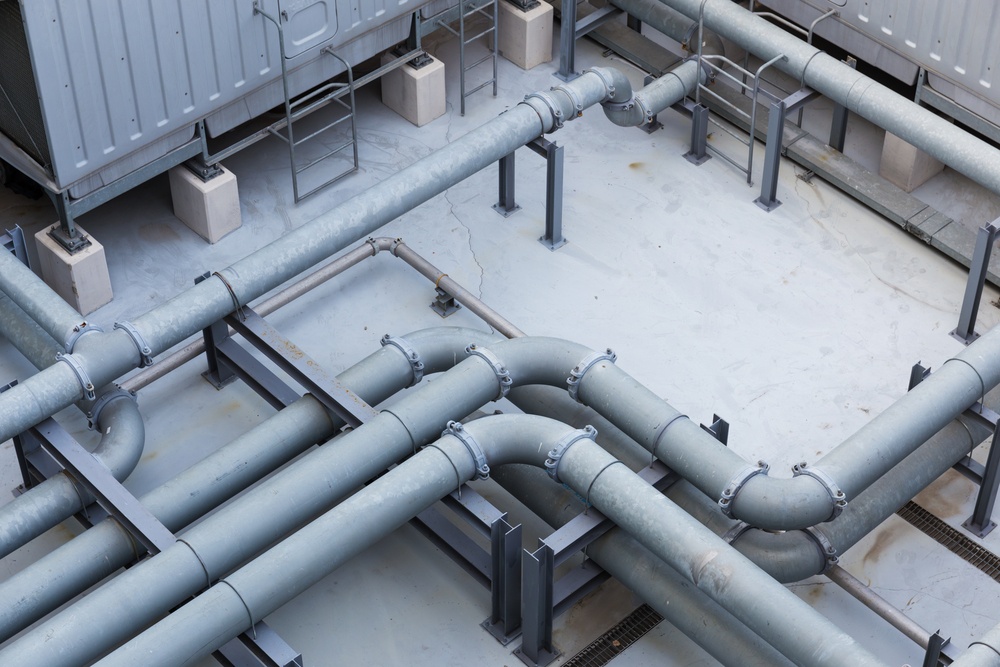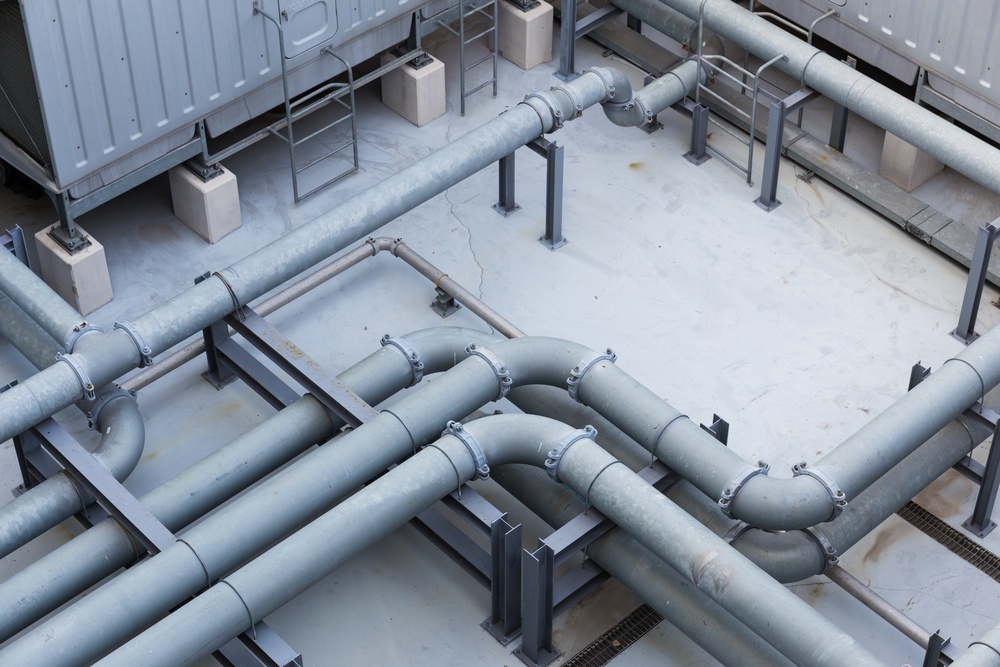
There’s nowhere to hide now (apart from indoors in the warm, possibly sat in front of a roaring log fire), the fact of the matters is, winter is looming. Those endless, balmy summer evenings have been consigned to the history book and autumn is now all around us. Which means, as night follows day, winter is lurking around the corner. There’s also no place to hide from your water system responsibilities either, irrespective of the change of temperature/season, while complacency is not an option.
Although the general misconception is that with the advent of significantly cooler weather, the threat of legionella bacteria taking root in temperature-fluctuating water systems is somehow diminished, as you can tell by our tone of voice, this is far from the case. On the contrary, the need to continue to be proactive with regards to your health and safety practices is more important than ever and be ignored at your peril. As ever, we seek to provide the answers to your questions on anything water treatment related, which is why we’ve sought to draw your attentions to the following 5 point code of conduct. Although not set in stone, the protocols found below are generally considered to be the best advice anyone tasked with water system responsibilities should be adhering to as the UK careers towards much shorter days and a markedly colder climate. Failure to do so could result in putting the health of employees, residents and public service users across a broad spectrum of organisations and services at risk of legionella exposure, which in turn could lead to episodes of Legionnaires’ disease.
So, What are These 5 Key Points we Should be Mindful of at this Time of Year?
Well, before we dive into that, let’s get to grips with the basics. In as much as learning/being reminded of what a chilled water system is, why they exist, how you can maintain their working integrity and moreover, just why the ushering in of winter can actually hamper their normal – and safe – operating levels.
The physicality of a chilled-water system sees an entire air-conditioning system typically sighted on either the roof of a building (as experienced in hotter countries) or located directly behind it. Its primary role is to cool water to temperatures between 4 and 7 degrees Celsius, and then distributes the chilled water throughout the building it serves, by way of connection with cool air handlers/facilities within the premises. Traditionally in a versatile system, the water pipes tend to work like the evaporator coils, which are present in a standard air conditioner. Providing it’s well-insulated, distance isn’t compromised either, therefore chilled-water reach is as far as it needs to be.
Chilled-water System Basics
The chiller is designed and engineered to extract heat from the water and acts primarily as a refrigerant. Before it embarks on its subsequent journey through a building the chilled water is circulated via a chilled water loop as well as coils situated in air handlers. Said water loop arrangements differ according to property size and number of outlets served, so while some assemblages are relatively simple, others can be more elaborate in construct. An in-built control system is the brain which determines everything from water pressure and velocity to volume dispersed, courtesy of pump control and valve actuators.
In terms of maintaining the workability of a chilled-water system as we stand on the cusp of more inclement weather, this will be addressed in the 5 points beneath. A hugely important concern, on account that such weather conditions can compromise the otherwise smooth operations as we now discover. In a nut shell, if and when the water pipes connected to chilled-water systems are impacted by low temperatures and frost, there’s a chance that the water within could freeze. In such an event, frozen water can expand beyond the pipe’s diameter, resulting in blockages, leaks and burst pipes. One of the main ways this threat can be nullified is explained in more detail beneath.
Prioritise Glycol Levels
With the onset of the colder months, chief amongst the most effective ways in which to ward off the threat of frozen water pipes in the context of chilled-water systems, is to introduce antifreeze. This usually manifests as the common chemical known as ethylene glycol, and in relation to volume require in individual systems, literature which came with the equipment will confirm amounts. The crucial bit is to keep on top of this particular job, with appropriate levels being monitored on a regular basis during the autumn and winter seasons. Risk has been identified in most chilled-water systems, yet those which have undergone upgrades or conversely, left discarded for a passage of time, represent the biggest problems. As do those systems which have been subjected to intentional draining and subsequent top-ups, the upshot of which means that any existing antifreeze in the system might be diluted to the point of inefficiency to combat plunging temperatures.
Coil Maintenance
Condenser fans have their work cut out more during the harsher winter months, as do chiller coils. What compounds matters is that inhospitable conditions can act as a magnet for unwanted contaminants, including the likes of dirt, mould and various other airborne pollutants in the immediate atmosphere at the time. Despite any accumulation building over a period rather than in one fell sweep, nevertheless a dirty coil can severely compromise airflow. And this has a knock-on effect with chiller efficiency levels, with it widely-acknowledged that for every 10% reduction in airflow, chiller efficiency is hit by some 5%. Simplistic coil cleaning which involves wiping debris can counter this. In addition to this, a frozen coil can be the precursor to a number of equally unwanted issues, not least the costs associated with coil replacements. Plus there’s a train of thought among some people that suggests steam coils are in some way infallible to freezing, yet that’s not the case. In fact, any cold spots on the coil or indeed, a steam trap which isn’t functioning can ultimately lead to condensate back up and freeze within a coil.
Pay Specific Attention to Strainers
Another critical area in terms of water-cooling systems which require on-going vigilance with, are strainers. Any contaminant which worms its way into strainers can trigger various catastrophes within a system; including pipe blockages, failed pumps and the dreaded freezing. Strainers becoming clogged up by biofilm, iron oxides, weld slag, corrosion and scale can pose serious problems to operation; ergo routine monitoring and cleaning is paramount.
Keep Your Eyes Peeled for Pipe Fractures
With the possibility of the aforementioned temperature, pressure and fluid volume variables, it’s imperative that you keep a weather eye on any visible fractures or damage to the pipework that carries chilled water to points elsewhere. The best way of assuring your system remains fit for purpose at this time of year is to conduct a dedicated winter health check; which involves evaluating core junctures in an existing system and implementing any remedial action required then and there.
Don’t Forget Trace Heating Checks
Pipes which feed off water chillers are often pre-protected from freezing, courtesy of trace heating methods. Appearing in the form of trace heating tape, it’s still vitally important to run the rule over any physical applications of this safeguarding measure, to ensure that corrosion or damage hasn’t affected any connections and therein leads to failure or pipe freezing. This insulating tape as such, can be prone to damage, including electrical connection issues. Because of the construct of this it’s always advisable to get a qualified electrical engineer to check this aspect, and who’ll have the right equipment for the job.






